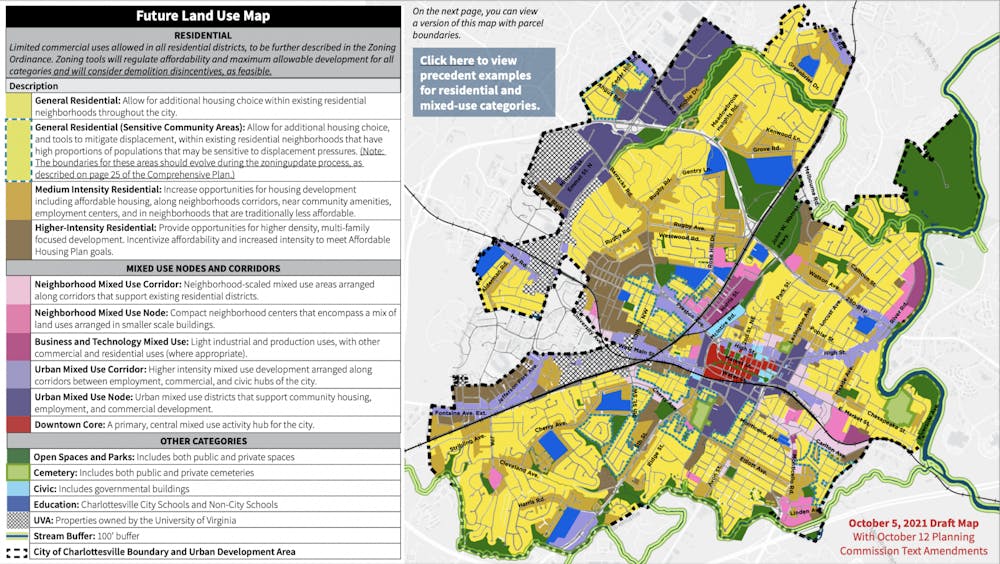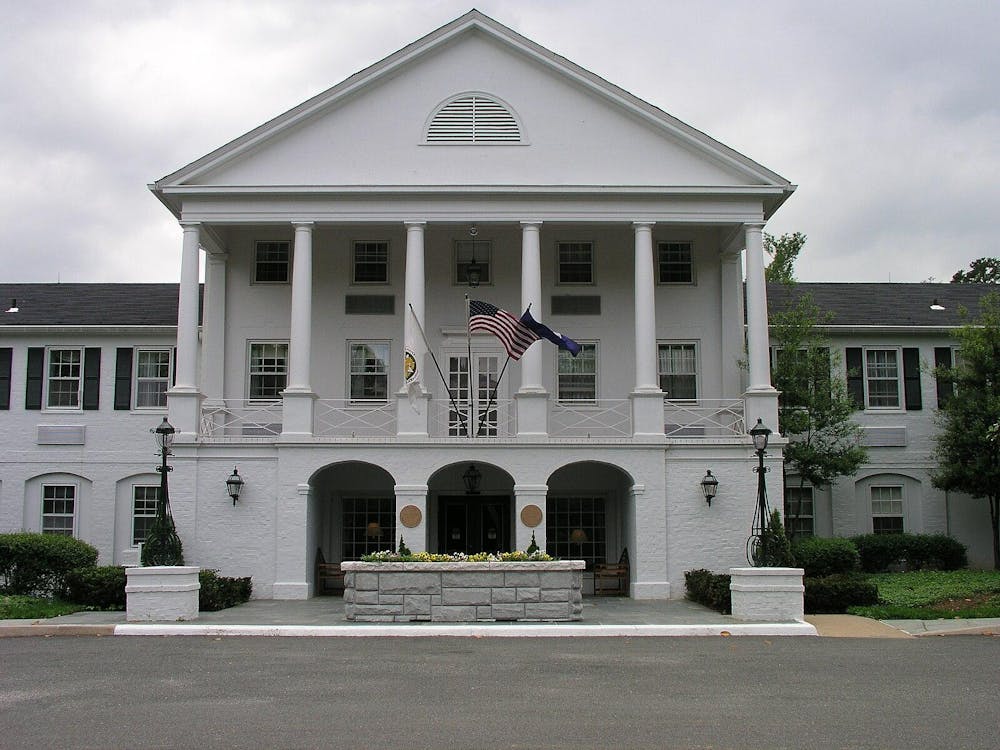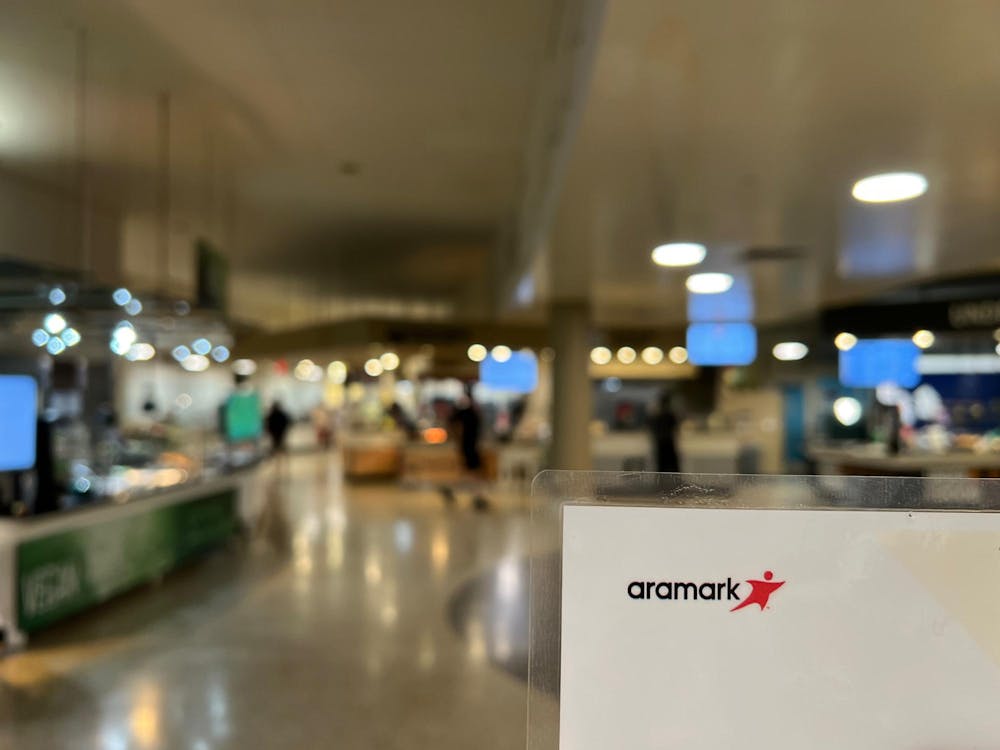After hours of public comment from local residents of Charlottesville and Albemarle County, Charlottesville City Council voted to pass the Comprehensive Plan in its public hearing Monday night. The plan includes a new Future Land Use Map, which has been a controversial subject in recent months due to concerns over zoning and housing density.
The City is required to update its Comprehensive Plan every five years. The document illustrates Charlottesville’s community visions and outlines decision-making for city planning matters such as land use, housing, preservation and urban design, according to the City website.
The plan is part of a project with consultant team Cville Plans Together, which aims to allow community members to participate in city planning that is equitable and affordable. This project also includes the Affordable Housing Plan, which aims to improve housing affordability and reduce inequality in home ownership and housing conditions. One of the major changes in the Comprehensive Plan comes after significant citizen input — the updated plan includes five community-driven guiding principles such as equity and opportunity. The City will aim to support development that takes into consideration the “full range of needs of Charlottesville’s diverse community” under this principle, according to the plan.
The Charlottesville Planning Commission and City Council held a joint hearing for the Comprehensive Plan Oct. 12 during which the Commission voted unanimously to recommend the City Council adopt the plan with four amendments. The amendments required that historic property development meet the National Register’s “contributing resource” designation, allow additional units and height for buildings in sensitive areas, add that zoning tools will regulate affordability and development and recommends that sensitive areas continue to be defined with additional Census Block Data considered. These amendments were included in the plan passed at Monday’s City Council meeting.
The FLUM attempts to solve discrepancies in opportunity by categorizing housing areas as general residential, medium-intensity residential or higher-intensity residential.
General residential zones in sensitive community areas will allow for tools to mitigate displacement. Medium residential zones will increase opportunities for development of affordable housing in less-affordable neighborhoods that are near community amenities and employment centers. Higher-intensity residential zones will allow for higher density and multi-family-focused development to meet the needs presented in Charlottesville’s Affordable Housing Plan. Previously, Charlottesville’s land-use policies did not allow all populations access to housing, transportation and employment opportunities.
A key part of the Comprehensive Plan is that land use and zoning decisions moving forward will be influenced by the FLUM.
Ron Sessoms, urban designer with Cville Plans Together, led the presentation on the City’s future land use goals and the map itself prior to public comment and voting. Sessoms said one of the major issues surrounding the FLUM discussions was the need for the City to recognize vulnerable populations that may be displaced as Charlottesville continues to grow.
“These are areas that could have low income, and they are areas that serve most of the diverse populations in the City,” Sessoms said.
Charlottesville displaced predominantly Black neighborhoods in the past, such as when it razed Vinegar Hill in 1964 in the name of “urban development.”
Additionally, the Charlottesville Low-Income Housing Coalition discovered there is a shortage of over 3,300 affordable rentals. Rental prices have increased in the past five years — the average rent for a two-bedroom apartment was $1,500 in September, an increase from the $1,189 average five years ago. This has led to the displacement of many Charlottesville residents and created a desire for more housing density and types of homes –– like multiplexes –– that will be affordable.
While Sessoms does not expect the FLUM to be implemented overnight — since rezoning will take about a year — he said it will help to create boundaries for these areas so residents of vulnerable populations are encouraged to stay where they live. The FLUM also increases access to wealth-building through the opportunities that will hopefully be created by updated zoning.
A majority of the participants in the public comment portion of the meeting spoke in favor of the updated Comprehensive Plan. Local residents asked City Council to consider that people deserve to keep living in the Charlottesville area amidst rises in housing prices, and several noted Charlottesville’s long history of segregation in housing and racist intentions behind previous zoning such as the history of Vinegar Hill.
Charlottesville resident Brandon Collins asked City Council to approve the revised plan because it has the potential to fight gentrification –– a process in which lower-income, older developments are replaced with new housing and businesses to appeal to wealthier populations.
“You have something that can provide affordable housing for those who most need it,” Collins said. “And you can make an attempt to desegregate Charlottesville, which has been segregated since its inception.”
Others added that removing buildings and people from local areas in favor of the aesthetics of large houses is unfair.
Elizabeth Stark, a home renter in the Woolen Mills neighborhood, has lived in Charlottesville with her family of four for the past eight years. Near their house, Stark said a small church was torn down to be replaced by two large single family homes. Stark noted these houses contain just one family, while a multiplex could house many families in the same amount of land.
“Without the ability to create dense, affordable housing, the trend of building gigantic single family mansions instead will continue,” Stark said.
Stark acknowledged arguments against the new plan in favor of large homes and urged City Council to move forward with the plan anyways.
“Wealthy landowners will likely be commenting tonight … that their wealth should afford them the privilege of not living near dense or diverse housing, or purporting to want to preserve so-called neighborhood character,” Stark said.
Stark said these wealthy landowners claim Charlottesville cannot increase density because they prefer “a handful of old trees” over the benefits of what could be a more environmentally-friendly and affordable city if it were to allow more dense housing.
Other public commenters requested that a vote be deferred so the plan could be further improved.
Before the eventual motion to vote by Vice Mayor Sena Magill, there was contention amongst the councilors over areas to be deemed “medium intensity residential.”
Councilors Heather Hill and Lloyd Snook were hesitant to accept the medium intensity category — Hill said the Council should add this category after zoning procedures have been done so they can then decide which areas would best fit the needs medium intensity is meant to serve.
“To try to designate specific streets at this time is premature,” Hill said. “I’d rather just have us look at it overall –– all nonsensitive, general residential areas and medium intensity residential areas as reflected here would be under consideration for the medium intensity residential as we look at it on a lot-by-lot basis.”
Mayor Nikuyah Walker, Councilor Michael Payne and Magill all agreed that the medium intensity land use category should be kept in the FLUM prior to zoning so the Council have more to work with throughout the zoning process.
“I also think it's a good idea to have it as a guiding idea of the areas that we're talking about, so that people can see and have the time to kind of sit with that this might be happening,” Magill said.
Walker agreed keeping the category will give Charlottesville residents a better idea of what the FLUM could do. Hill and Snook eventually looked past their concerns and voted to pass the new Comprehensive Plan just before midnight.
The FLUM is expected to protect communities and promote the City’s climate action plan while allowing the Charlottesville population to continue to grow into the future.
“If we allow more people to live in the city, we can benefit every single person who would like to live here but can't afford to,” local resident Crystal Pasmore said during public comment. “We can decrease single vehicle car use, we can create housing for working class people.”







